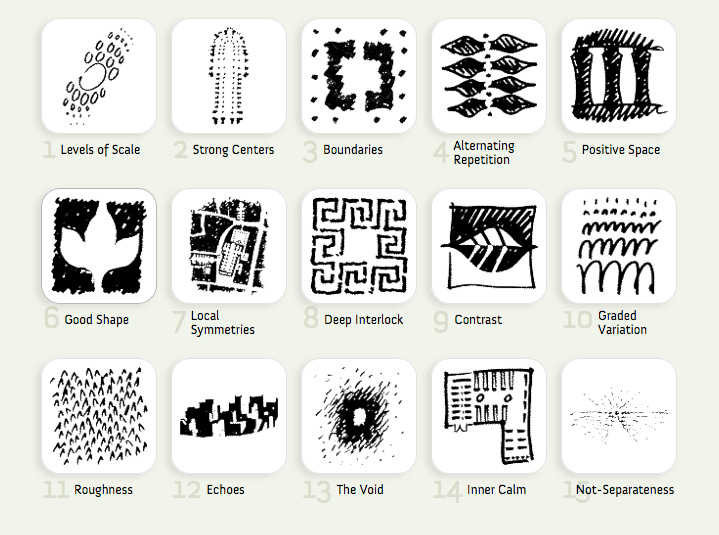
In architecture, patterns serve a similar role to jazz and communication. Alexander defines patterns as part-wholes that resolve a more or less independent cluster of interacting forces with good fit. In his work he and his colleagues provides a pattern language for architects with archetypical patterns for rooms, houses, neighborhoods, towns, and areas. Like the jazz standard, or the form of communication, the design pattern serves as a minimal structure that requires unique instantiation by an architect and builders into the physical world. Using any pattern, the designer can instantiate a million unique forms in physical reality. The outcome of applying the design pattern is a unique construction, yet the pattern itself remains abstract and clearly identifiable as a part of the spatial whole over the uniqueness of instances.
When we practice the patterns in a certain way - whether in jazz, communication, or architecture - something beautiful happens. In jazz we feel a groove emerging, in communication we start experiencing mystery, and in architecture the environment comes to life.